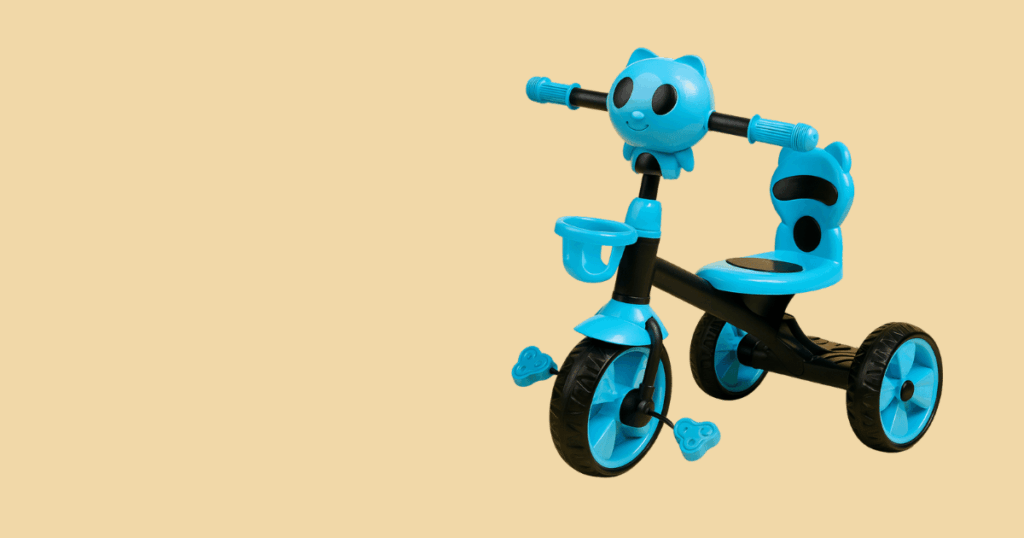Patrocinado
Beginner’s Guide: Finding the Ideal Cycle for Kids Learning to Ride

There’s something magical about a child’s first bike ride — the nervous excitement, the laughter, and the pride that follows when they pedal away on their own. But before that moment arrives, one crucial decision stands in the way: finding the perfect Cycle for Kids to start their riding journey.
For parents, the goal is simple — a cycle that’s safe, comfortable, and helps children learn at their own pace. This guide will walk you through everything you need to know to choose the right Cycle for Kids for beginners, ensuring your little rider starts strong and stays confident.
1. Start with the Right Size
When it comes to buying a Cycle for Kids, size is everything. Many parents make the mistake of choosing a larger cycle thinking their child will “grow into it,” but that often leads to frustration and safety issues. A bike that’s too big makes it difficult for kids to balance or stop properly.
Here’s a quick size guide to help you match the wheel size with your child’s height:
| Age Group | Wheel Size | Height Range |
|---|---|---|
| 2–4 years | 12 inches | 85–100 cm |
| 4–6 years | 14–16 inches | 100–115 cm |
| 6–9 years | 20 inches | 115–135 cm |
| 9–12 years | 24 inches | 135–150 cm |
When seated, your child’s feet should touch the ground comfortably, and they should be able to reach the handlebars without stretching. A properly fitted Cycle for Kids helps build confidence from the very first ride.
2. Choose Between Balance and Pedal Bikes
If your child is just starting out, you have two main options: a balance bike or a pedal bike with training wheels.
-
Balance Bikes: Ideal for toddlers and young beginners, these cycles come without pedals. They teach children how to balance naturally using their feet to push off and glide. Once they master balance, switching to a pedal bike becomes easy and seamless.
-
Pedal Bikes: Great for kids who’ve already learned to balance or are ready for the next challenge. Look for models with removable training wheels — they provide extra stability while learning and can be taken off when your child is ready to ride independently.
Choosing the right starting point ensures your Cycle for Kids supports progress step-by-step rather than overwhelming them.
3. Focus on Weight and Build Quality
A good beginner’s Cycle for Kids should be lightweight yet sturdy. Heavy bikes can be difficult for small children to control, especially when they’re learning to balance and steer.
Aluminum frames are ideal — they’re light, rust-resistant, and durable. Avoid overly heavy steel models unless your child is older or stronger.
In addition, check for:
-
Smooth, rounded edges (to prevent scrapes)
-
Soft, padded grips for comfort
-
Wide, stable tyres for better traction
These details make early rides smoother, safer, and far more enjoyable.
4. Check the Brake Type
Braking is one of the most important skills to master, so choose a Cycle for Kids with brakes that match your child’s age and strength.
-
Coaster Brakes (Pedal Brakes): Activated by pedaling backward, these are best for younger riders who may not yet have strong hand coordination.
-
Hand Brakes: Suitable for older kids or those ready to develop finer control.
Make sure the brake levers are easy to squeeze and properly adjusted for small hands. A smooth, responsive braking system helps build trust and confidence while learning.
5. Safety Gear is Non-Negotiable
Even the safest Cycle for Kids needs the right protective gear. Every beginner should have:
-
A well-fitted helmet (a must for all rides)
-
Knee and elbow pads for added protection
-
Reflectors and lights if riding near dusk or low-light areas
-
Bright or reflective clothing for visibility
These small steps turn nervous first rides into safe, confident experiences.
6. Comfort Builds Confidence
A comfortable child is a confident rider. Make sure the Cycle for Kids has:
-
An adjustable seat to grow with your child
-
A soft, padded saddle
-
Proper handlebar height for upright posture
When kids feel at ease on their cycle, they’ll spend more time practicing and improving — turning small wobbles into steady rides.
7. Teach Step-by-Step, Not All at Once
Learning to ride a Cycle for Kids is a gradual process. Here’s a simple step-by-step approach for parents:
-
Start on a flat, open area with no traffic or obstacles.
-
Let your child walk or glide on the bike first to build balance.
-
Once confident, introduce pedaling slowly, supporting them if needed.
-
Encourage short sessions at first — 10–15 minutes of practice works better than long rides.
-
Celebrate small wins — each successful attempt builds motivation.
Patience and encouragement make learning both fun and rewarding.
8. Make Safety a Habit Early
As your child improves, begin teaching simple safety rules — like checking brakes before every ride, stopping at crossings, and being aware of pedestrians. A Cycle for Kids is a great tool to start developing early road awareness and responsibility.
Parents should also inspect the bike regularly for loose parts, tyre pressure, and chain tension. Regular maintenance ensures every ride stays smooth and secure.
9. Don’t Forget the Fun Factor
While safety and fit are vital, don’t overlook the joy factor. Choose a Cycle for Kids in colors or designs your child loves — superheroes, bright pastels, or sporty patterns. A bike that looks exciting motivates kids to ride more often, keeping them active and happy.
Final Thoughts
Finding the ideal Cycle for Kids for beginners isn’t just about choosing a bike — it’s about creating the foundation for a lifelong love of riding. The right size, build, and comfort level will help your child learn safely, grow confidently, and enjoy every pedal forward.
So, when shopping for your little one, think beyond price tags. Look for a cycle that fits well, feels light, and reflects your child’s personality. Because when learning begins with joy and safety, every ride becomes a step toward independence, balance, and endless fun.




